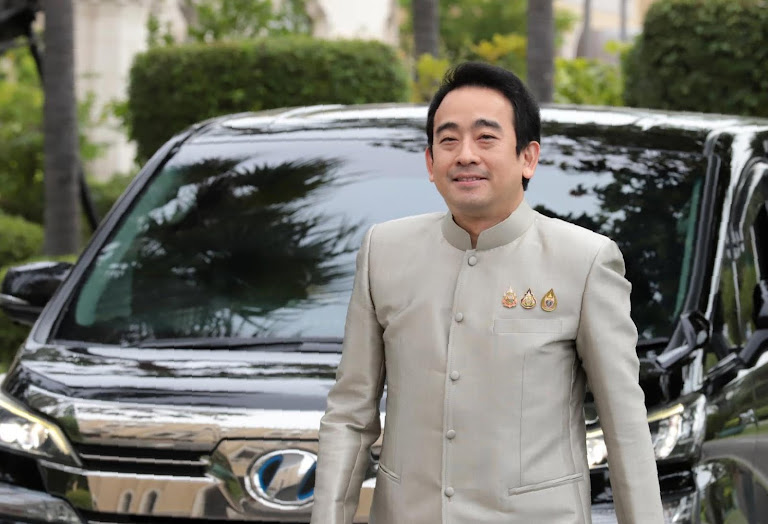Thailand’s Trade Talks Expose Hypocrisy of Free Trade’s Promises
Thailand’s tariff stance reveals free trade’s selective application, prioritizing domestic industries over promises of universal benefit and open borders.

Here we go.
The catechism of free trade — the unwavering belief that dismantling borders and unleashing the unfettered exchange of goods is the closest thing economics has to a panacea — is once again running headfirst into the brick wall of national interest. Thailand, fresh from trade talks with the United States, is signaling a willingness to play ball, but with a caveat that exposes the hypocrisy at the heart of so many trade agreements: its own industries come first. Deputy Finance Minister Paopoom Rojanasakul summed up the pragmatic calculus: “The winner in negotiations is not the one who gets the lowest tariff, but the one who can maintain the most balanced outcome.” Bangkok Post
It’s a statement that punctures the almost religious zeal with which free trade agreements are often pursued. The promise, endlessly repeated, is always the same: more growth, lower prices, a rising tide that lifts all boats. Yet, as Thailand’s hesitation demonstrates, the distributional effects are anything but even. Often, they reek of a neo-colonial bargain: rich nations demanding access to developing markets in exchange for crumbs from their own heavily subsidized tables, all while lecturing on the virtues of “level playing fields.”
Paopoom’s concern is not some irrational outburst of protectionism. Blithely eliminating tariffs, particularly on “strategic products,” risks shattering domestic supply chains built over decades. Overexposure to cheaper imports can strangle nascent local industries before they’ve had a chance to mature, leaving the nation dangerously vulnerable to the volatility of global commodity markets and the strategic leverage of external producers. This isn’t simply about shielding inefficiency; it’s about calibrating the speed of integration to preserve a degree of national economic self-determination.
The seductive power of completely open markets is built on a foundation of simplifying assumptions. The theory of comparative advantage, championed by economist David Ricardo in the 19th century, argues that nations should specialize in producing goods and services where they have the lowest opportunity cost and trade freely. But this elegant model conveniently ignores critical realities: the need for infant industry protection, the strategic importance of developing technological capabilities, and, perhaps most crucially, the very real political consequences of mass job displacement and the social unrest it fuels. Consider the decline of manufacturing in the American rust belt — a direct consequence of trade policies that prioritized short-term consumer benefits over long-term community stability.
Chanintr Chalisarapong, vice chairman of the Thai Chamber of Commerce, offers a counter-narrative, touting plans to scrap tariffs on 90% of US goods, a move he claims “exceeds commitments by Indonesia and Vietnam.” This proposal, potentially trimming Thailand’s trade surplus with the US by a hefty 70% in three years, highlights a key motivation: Thailand’s ambition to become an export processing hub within Southeast Asia. The calculation is straightforward: slash tariffs on key US inputs, attract foreign investment, and transform the country into a regional manufacturing powerhouse.
However, as always, the devil lurks in the details. As Paopoom pointedly noted, Thailand is wary of emulating Vietnam’s approach, which utilizes a two-tiered tariff system with higher rates applied to goods with lower regional value content. The implicit acknowledgment is that Thailand believes it has more robust, integrated supply chains, allowing it to leverage U. S. inputs more effectively and capture a larger share of the value-added.
Zooming out, the US-Thailand waltz over tariffs reveals deeper structural cracks in the edifice of globalization. The era of unbridled globalization, once heralded as the inevitable culmination of history, is now facing a reckoning. Rising inequality, widespread anxieties about job security, and the resurgence of great power competition have forced policymakers to question the unconditional benefits of unrestricted capital flows and unfettered trade. The 2016 election of Donald Trump, built on a platform of trade skepticism and manufacturing revival, served as a stark warning.
The US itself, of course, is no shining beacon of pure free trade. Consider the farm bill, a gargantuan piece of legislation that shovels tens of billions of dollars in subsidies to American farmers. These subsidies, as economists like Joseph Stiglitz have tirelessly pointed out, distort global agricultural markets, effectively punishing developing countries that lack the resources to match the US’s largesse. It’s a system where “free trade” becomes a euphemism for managed competition rigged in favor of the powerful.
“The winner in negotiations is not the one who gets the lowest tariff, but the one who can maintain the most balanced outcome,”
Paopoom’s statement resonates with a refreshing honesty, rarely uttered with such force in the carefully choreographed world of international trade negotiations. The crucial question is whether this kind of realism can overcome the decades-long inertia of orthodox free trade dogma and the powerful interests that benefit from it. The future of the global trading system, and the economic prospects of nations like Thailand, may hinge on the answer. Perhaps these bumps in the road will remind us that markets aren’t always inherently free or balanced; they reflect the choices we make — and the power we wield — to shape them.









